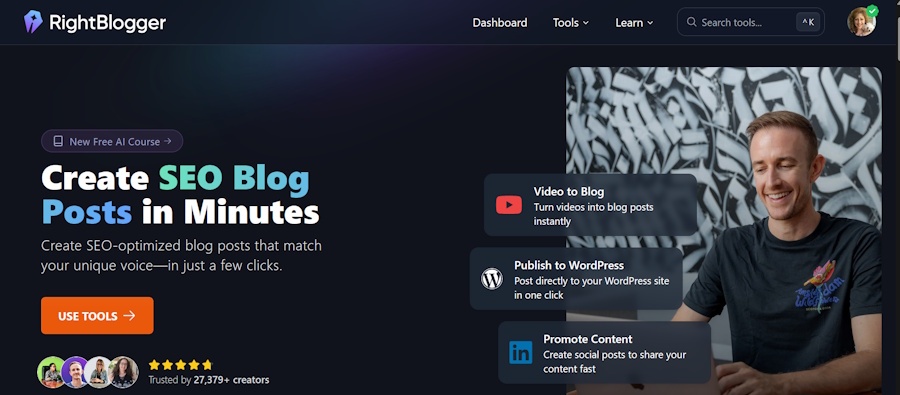AI fails pop up everywhere these days, from chatbots helping customers to tools making digital art.
The results are often impressive, but sometimes, things don’t go as planned. You’ll see strange pictures, wild stories or offbeat answers that make you wonder what the robot was thinking.
These humorous moments illustrate both the progress this technology has made and its ongoing challenges.
When we spot these oddball mistakes, we learn what AI can truly handle and where it falls short.
Want to see for yourself? Try playing with the Bing Image Creator and watch AI work its magic—or completely miss the mark.
What Are AI Fails? Understanding the Phenomenon
AI fails are those unexpected, odd, or sometimes downright funny mistakes artificial intelligence systems make during tasks. From translation mix-ups in chatbots to bizarre image generations, AI slips often grab attention for their unpredictability.
These moments help us spot where technology still falls short of accurate human understanding. A common fail is an extra appendage on an image, such as three hands. 6 fingers, or two heads.
Or how about this one? Notice anything unusual about this image?

Hint: Where’s his body?
Understanding the roots and results of these failures keeps us aware and sometimes entertained as AI’s role continues to grow.
The Causes Behind Unexpected AI Behavior
Several factors drive unexpected AI behavior. Behind every well-known AI fail, whether a weird misinterpretation or a viral image holding extra fingers, there’s often a mix of technical and human mistakes.
- Data flaws: AI “learns” based on massive datasets. If those sets include errors, biases, or unusual examples, the system can identify these quirks and recreate them in real-world situations.
- User input: Sometimes people try to “trick” AI or give it strange tasks, often to see what happens. This can reveal blind spots, like language models responding in silly or offbeat ways.
- Algorithm limitations: Even the most intelligent algorithms aren’t perfect. They spot patterns, but when they encounter something outside their training—such as a never-before-seen meme or regional slang—the results can be unpredictable.
- Misinterpreted context: AI doesn’t “understand” situations like humans do. Without real-world knowledge, it may give surface-level answers that miss the point entirely.
AI tools require specific and structured prompts that enable the AI tool to give more expected results.
One of my go-to tools for help with AI prompts is RightBlogger’s AI Prompt Improver. It helps you write better prompts for text and image-generating AI.
Real-world stories are everywhere. For example, widely shared AI-generated images sometimes put eyes on foreheads or create hands with six fingers.

There are also chatbot failures where a virtual assistant provides incorrect directions or struggles with everyday questions. These failures aren’t just amusing—they can reveal the deeper challenges behind maintaining AI reliability.
If you’re curious about different ways AI has improved despite these fails, explore how technology is redefining success through AI and where advances continue to shift the boundaries for what AI can do.
The Difference Between Harmless Glitches and Risky AI Fails
Not all AI fails are created equal. Many are simple glitches—entertaining, mostly harmless, and even meme-worthy. Others, though, signal real risks that can affect people or businesses.
Harmless glitches usually pop up when AI runs into a task outside its comfort zone, such as:
- Funny images from AI art tools that look cartoonish or surreal
- Virtual assistants repeating a joke or misunderstanding slang
These mistakes don’t cause any damage; at most, they provide a laugh or a chance to poke fun at robots. On the flip side, risky AI fails can turn into real problems, like:
- Flawed image recognition programs that misidentify people or items, leading to mistaken identity or privacy concerns
- AI in self-driving cars making poor decisions in unfamiliar scenarios
- Biased chatbots giving out offensive or harmful responses, often rooted in the data the AI was trained on
What separates funny glitches from harmful ones is context. When AI is part of lighthearted art or conversation, fails are just moments to share online.
When AI makes decisions that have significant consequences, such as blocking accounts, making financial choices, or driving cars, missteps can have severe repercussions.
As AI continues to grow in complexity and applications, recognizing these differences is more critical than ever. There’s a constant need to refine algorithms, train on better data, and learn from every quirky error.
For another look at recent advances that have shaped how AI creates, consider innovations in AI image generation and how missteps have contributed to improvements over time.
A Look at the Funniest AI Glitches and Unexpected Results
Every day, people interact with AI tools that surprise, confuse, or amuse in ways no one expected. These accidental comedy moments remind us that no matter how intelligent AI gets, it can still fall flat in the most hilarious ways.
Whether it’s a picture gone sideways or a chatbot losing the plot, these stories highlight the playful side of AI fails. Below are some of the most famous, funniest, and viral moments when artificial intelligence got it wildly wrong.
AI Image Generator Laughs: When Art Gets Weird
AI image generators have delivered some of the most unforgettable fails in recent years. Ask for a photo of a family at dinner, and suddenly the mom’s hand doubles in size, or every face sports an oddly joyful grin.

Sometimes, pictures feature people with three arms, glasses that melt into faces, or dogs with human teeth. These glitches often go viral because they mix realism with downright oddity.
Recent years have brought a rush of hilarious examples to social media:
- Too Many Fingers: AI’s struggle with hands is legendary. It often gives people six, seven, or more fingers.
- Melting Faces and Eyes: Portraits with eyes floating in odd places or mouth shapes that make no sense.
- Animal Hybrids: Request a cute dog, receive a bizarre mix of several animals or a dog with human eyes.
- Surreal Food: Burgers with spaghetti buns or pizzas topped with bananas and pencils.
Platforms like TikTok’s funny AI glitches showcase how these art bots sometimes go off the rails for everyone to see. Curious how these images are created (or mis-created)?
If you want to try your luck, see our guide to the Bing Image Creator platform. You might end up with your own AI fail worth sharing.
Chatbot Conversations Gone Off the Rails
Chatbots are designed to mimic natural conversation, but that doesn’t always go as planned. There are endless examples of bots getting confused, delivering nonsensical answers, or responding with pure absurdity.
Sometimes, the results are so wild that they end up as memes or viral screenshots. Below are some classic types of chatbot mishaps:
- Repeating nonsense: A bot stuck in a loop, replying with the same line again and again. As I have learned from personal experience, this is a real pain!
- Mixing facts: Chatbots confidently state “facts” that are mashups of unrelated topics, such as “Abraham Lincoln invented pizza in space.”
- Misreading tone: When asked for a joke, the bot delivers something uncomfortably dark or completely off-topic.
- Unintentional sass: Chatbots often respond with answers that come across as sarcastic or passive-aggressive.
For a closer look at recent chatbot fails and why they happen, see this list of the six biggest chatbot fails and what can be learned from them.
These examples demonstrate that, despite significant progress in AI, humour and unpredictability remain ever-present. Next time you see a chatbot blunder or a warped AI image, just remember—it’s all part of the AI fails experience.
Want to know how these visual oddities happen? You can read more about AI image creation tools and their quirks for a behind-the-scenes peek at what makes these fails possible.
What These AI Fails Teach Us About Advancing Technology
AI fails aren’t just funny. They’re also packed with important lessons. Every glitch and unexpected outcome helps shape better, safer systems.
When we spotlight these hiccups, we see how engineers and companies tune their technology for real-world use. The feedback loop between public blunders and smarter solutions is what pushes artificial intelligence forward.
What comes from watching technology get it wrong in public view?
Learning from Mistakes: Improving Artificial Intelligence
Every time an AI gets something wildly wrong, developers take notes. Publicized AI fails force teams to tune up their algorithms, review their datasets, and seriously rethink safety steps.
The world remembers headline-making stories where AI tools misidentified objects, delivered strange results, or shared skewed information.
These events aren’t just embarrassing—they push for rapid improvement. Here’s how visible mistakes lead to smarter AI:
- Richer training data: After a high-profile error, companies will add new examples to training datasets. This helps AI recognize outlier cases and handle unusual requests with more skill.
- Better user testing: Real-world glitches expose blind spots. Companies respond by including wider community feedback and edge cases in beta tests.
- Stronger safety nets: When an AI goes viral for the wrong reasons, developers add more checks and safeguards to catch mistakes before they reach the public.
- Clearer communication: Teams learn fast that users need to know AI’s limits—honest disclosures about what tech can and can’t do become standard practice.
In the same way, a missed step in a dance can help a performer fine-tune their routine; these AI slips are valuable “crash courses” for inventors.
Every cringe-worthy moment helps shape future upgrades. If you’re fascinated by how public errors turn into wins, explore our Viral Headlines Guide for more on turning unexpected moments into lessons.
Final Thoughts About AI Fails
AI fails give us more than just a good laugh; they remind us that technology is always learning right alongside us.
These unexpected glitches reveal the humorous side of machines while also helping developers create more intelligent, more user-friendly systems.
Seeing how AI sometimes misses the mark encourages us to view its progress with a mix of curiosity and a sense of humor.
Real progress occurs when teams learn from every error and continue to push for fairer, more reliable results.
If you want to continue exploring the creative—and surprising—side of artificial intelligence, check out resources on AI image generators and see where this technology takes us next.
Thanks for taking the time to read and celebrate the unpredictable world of AI fails. Share your favorite AI blunder or thought in the comments, and let’s keep this conversation going as AI becomes even more a part of everyday life.

Enhance and Refine Your AI Image Prompts

As a Visual Digital Marketing Specialist for New Horizons 123, Julie works to grow small businesses, increasing their online visibility by leveraging the latest in internet and video technologies. She specializes in creative camera-less animated video production, custom images, content writing, and SlideShare presentations. Julie also manages content, blog management, email marketing, marketing automation, and social media for her clients.





Hi Julie, I haven’t noticed many of these but I’ll be on the lookout now. You pointed out some really good ones. AI like humans are not perfect, that’s for sure.
Hi Lisa,
You know what’s funny? I have seen MORE when I didn’t want to see them. When writing this post and creating the related video, I had more trouble getting the fails when I tried LOL